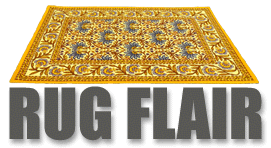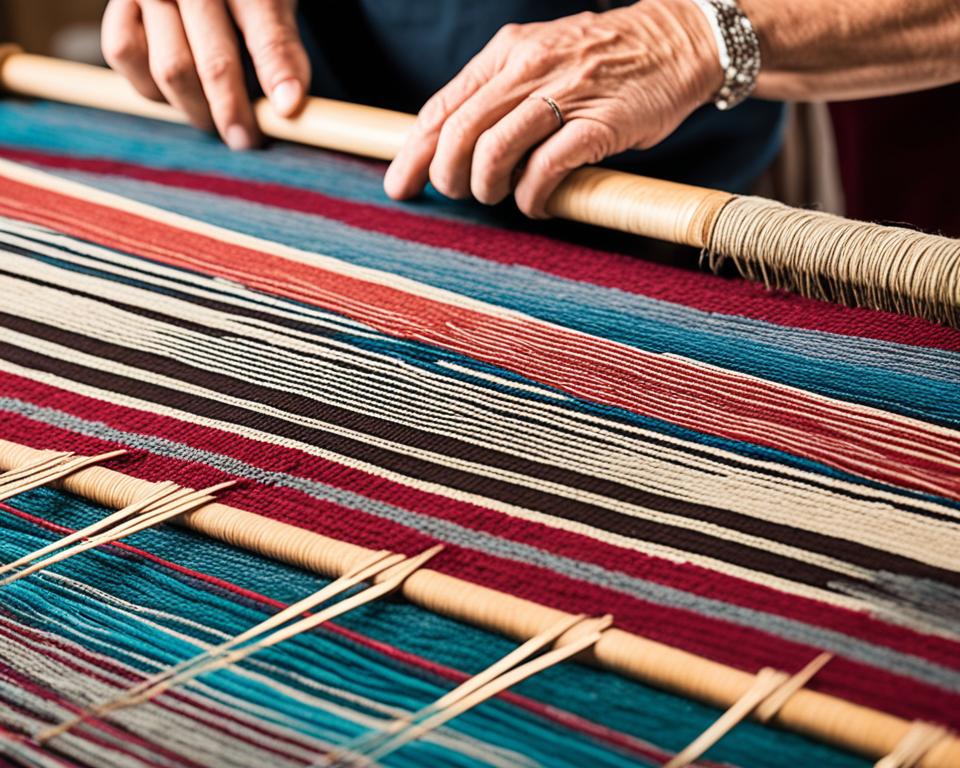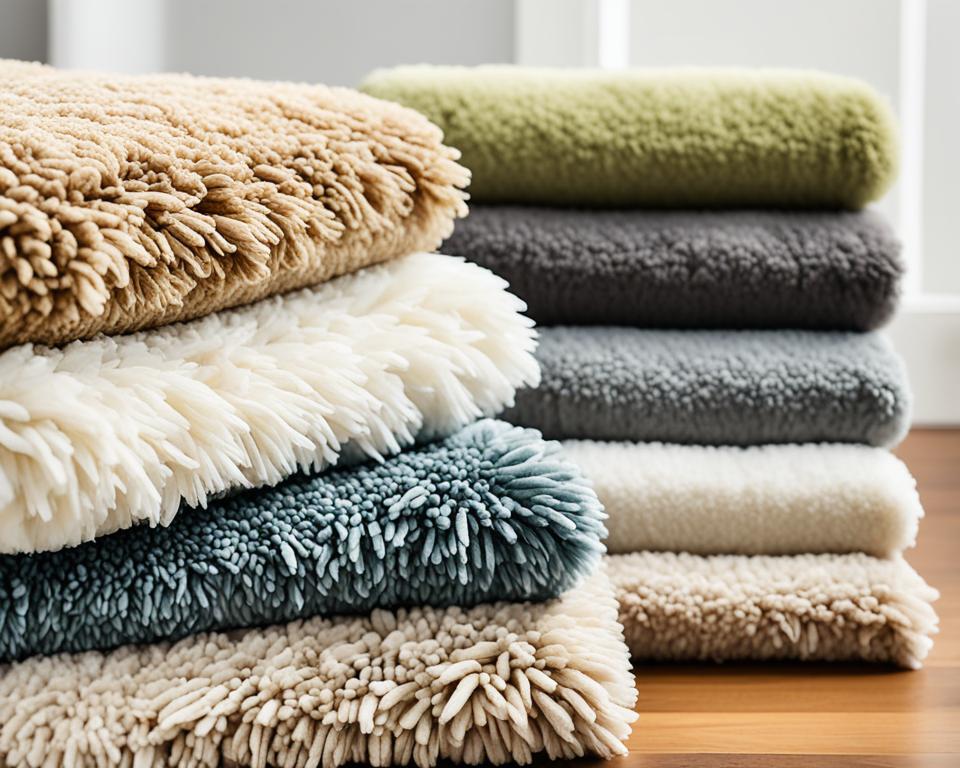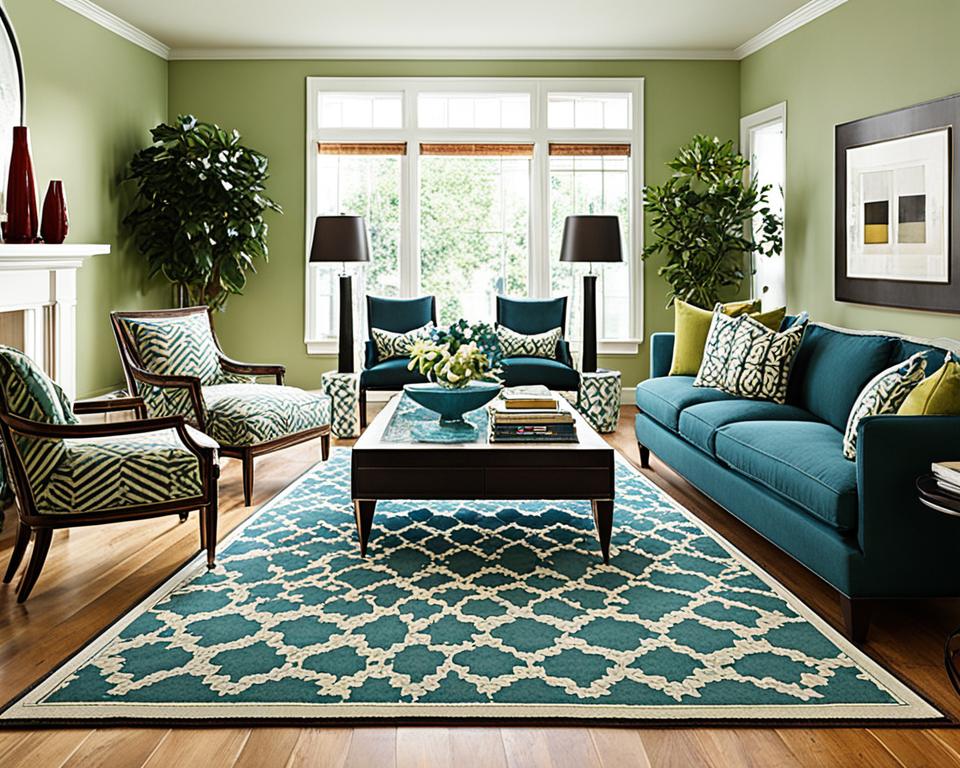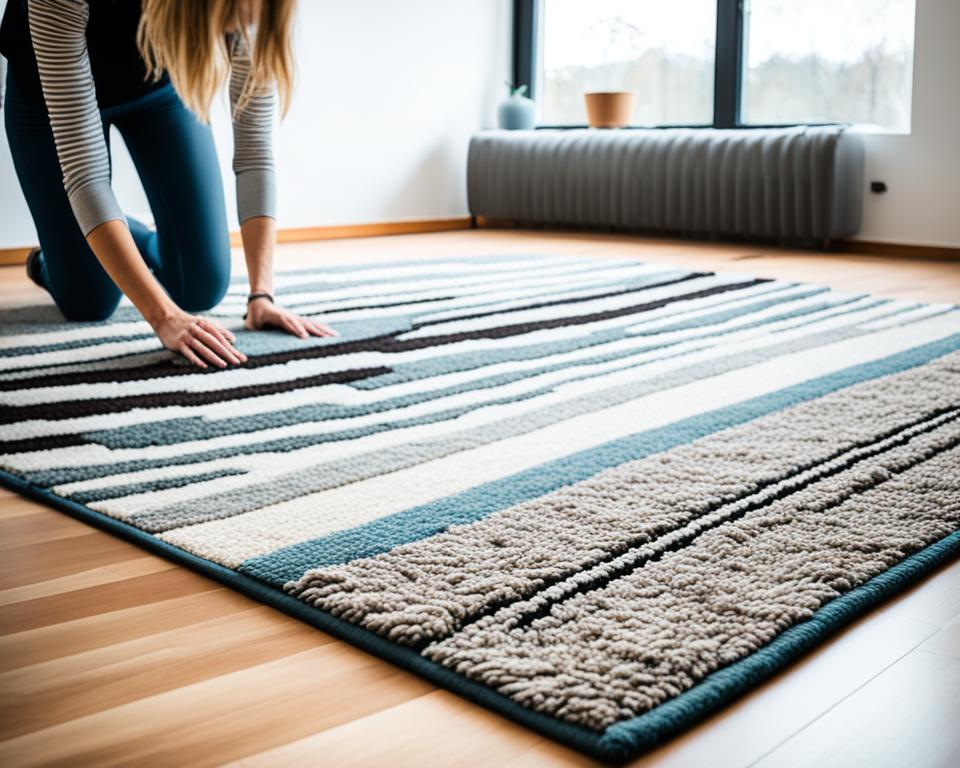Embark on a journey into the heart of your home’s decor with an exploration of artisan rug construction. Marvel as we unravel the layers of the rug fabrication process, where each fiber is laced with generations of traditional rug weaving techniques. Picture this: skilled artisans meticulously crafting bespoke rugs that not only adorn your floors but also tell a narrative of cultural heritage and artistic dedication. You, as a connoisseur of handcrafted pieces, have the power to bring this artistry into your living space. Ready to step into the wide, woven world of handmade rugs? Let’s begin.
Key Takeaways
- Handmade rugs are the epitome of artisan craftsmanship, weaving together beauty and durability.
- Understanding the rug fabrication process deepens your appreciation of the art form and its creators.
- Each rug is a narrative piece, chronicling its own tale through traditional rug weaving techniques.
- Your choice of an artisan rug is a statement that celebrates cultural traditions and supports sustainable practices.
- The intricacy and uniqueness of handcrafted rugs transform them from mere decor to treasured heirlooms.
The Artisan’s Palette: Selecting Materials
At the foundation of handmade rug production, lies the thoughtful selection of materials. This initial choice is critical as it influences not only the rug’s final aesthetic but its durability and comfort underfoot. Artisans, true to their heritage, opt for natural fibers that carry the legacy of centuries-old rug crafting methods.
The fibers used are more than just threads; they’re the embodiment of nature’s gifts expertly chosen for creating masterpieces meant to last generations. Below, we’ll delve into the fibers of choice, the ethical considerations in their selection, and the preparations undertaken that set the stage for rug weaving artistry.
Wool, Silk, and Cotton: Fibers of Choice
The choice of material in rug crafting methods is paramount. Wool is highly favored for its resilience and plush texture, making it a predominant choice for those looking for comfort and longevity. Silk, with its natural sheen and extraordinary strength, is reserved for rugs that require intricate detail and a luxurious touch. Cotton is often the go-to for the rug’s foundation, thanks to its stability and affordability, providing durability without compromising on quality.
Sourcing Ethically: The Importance of Provenance
The significance of materials selection for rugs extends beyond aesthetics; provenance plays a crucial role. Ethically sourced materials are a reflection of the industry’s commitment to the welfare of animals and sustainable practices. Recognizing the artisans’ bonds to their environment ensures that each rug tells a story of responsible crafting from its very threads.
Sun-Drying and Sorting: Preparing for Perfection
Before a single knot is tied, the process of sun-drying and hand-sorting the natural fibers takes precedence. Leveraging the abundant sunlight, fibres like wool are bathed in the warmth of the sun, ensuring any remnants of moisture are eradicated. Once dried, the sorting begins—each fiber meticulously chosen to ensure uniformity in texture and quality, setting the foundation for a rug worth treasuring.
Time-Honored Techniques in Rug Crafting
As you step into the world of rug crafting, you embark on a historical odyssey that intertwines threads of culture, tradition, and artistry. The intricate rug crafting methods that have been honed over centuries are not just about producing textiles but are a form of storytelling, breathing life into the inanimate. In this exploration of traditional rug weaving techniques, you will discover the patience and skill imbued within every loop and knot of these handwoven treasures.
The mastery required to create such pieces is profound, for it relies on techniques that artisans have passed down through the generations. Let’s look closely at the main weaving practices that continue to be the cornerstone of this venerable craft.
Hand-knotting stands as the paragon of rug weaving, demanding incredible dexterity and months, sometimes years, of dedicated labor. This method results in rugs that are rich in detail, with each knot contributing to the rug’s overall strength and intricacy. Here’s a comparison of different knots used across various cultures:
| Crafting Tradition | Type of Knot | Characteristics | Cultural Significance |
|---|---|---|---|
| Persian Rugs | Senneh (Persian) Knot | Asymmetrical, allows for finer details | Integral to the Persian art of storytelling |
| Turkish Rugs | Ghiordes (Turkish) Knot | Symmetrical, produces stronger and more durable rugs | Reflects the robust nature of Anatolian culture |
| Tibetan Rugs | Tibetan Knot | Looped around a rod, unique textural quality | Symbolic of Tibetan spirituality and heritage |
Conversely, flat-weaving is a testament to the diversity within rug crafting methods, where no knots are used, yielding a thinner and reversible rug. This technique includes styles like Kilim and Dhurrie, which are known for their vibrant patterns and durability.
- Kilim: Originating from the geographic areas of the Balkans to Pakistan, it features a tapestry weave that’s perfect for ornate designs and light use.
- Dhurrie: Typically from India, these flat-weaves are known for their cotton or wool composition and geometric patterns that carry cultural narratives.
In each carefully crafted coil or flat stretch, the enduring essence of traditional rug weaving techniques is evident. The complex dance of the weaver’s fingers as they intertwine fibers ensures that every rug is not only a utilitarian object but also a vessel of cultural memory and a canvas for personal expression.
Remember, as you walk upon or admire a handcrafted rug, what you are witnessing is not merely a product of labor but an echo of the soul and history of the artisan whose expertise wove it into existence.
How Rugs are Made: From Design to Weaving
The journey of a rug begins with a mere concept, a pattern in the mind’s eye that is meticulously brought to life by the agile hands of an artisan. The rug making process is a testament to the symbiosis between traditional craftsmanship and modern design sensibilities. As we delve into the creation of these woven wonders, let us first explore the initial steps that lay the groundwork for a rug’s birth—the blueprint of its beauty.
Blueprints of Beauty: Graphing the Patterns
Before the wool meets the loom, the designs of hand-knotted rugs are scrupulously plotted on graph paper, with each square representing a single knot. These blueprints are the anchor to which weavers turn their creative visions into intricate patterned narratives etched onto the fabric of the rug. With precise calculations and an eye for symmetry, artisans intricately blend ancient motifs with contemporary designs to create timeless floor art.
Hand-Knotting and Tufting: Weaving the Tapestry
The act of weaving is where the true magic happens, where the graphed designs transition from paper to tactile reality. Hand-knotting, a technique revered for its durability, requires a weaver to meticulously tie each knot by hand—a process both time-consuming and breathtaking in the level of detail it can capture. Picture the weaver, knuckles grazing over wool, fingers flying with a rhythm honed by years of practice.
On the softer side of the texture spectrum, hand-tufting employs a less labor-intensive method, ideal for those desiring a plush underfoot experience. Tufted rugs, recognizable by their soft pile and flow of colors, often display modern aesthetics whilst incorporating the structural integrity of traditional crafting.
Whether a Persian masterpiece steep in royal history or a Turkish tapestry heavy with tribal tales, each rug narrates an ancient story through its distinct weave. Or take the Indian dhurrie, a flat-weave marvel, known for its robustness and vivid geometric lexicon, echoing the subcontinent’s rich tapestry of life. These woven artworks capture not just the imagination but the essence of the artisan’s way of life and are testament to the storied rug making process.
As you admire the intricate designs and the rich textures of these rugs, consider the skilled hands that tied each knot and pulled each loop. Through hand-knotting and hand-tufting, weavers connect us to a lineage of storytelling fibres that speak of culture, art, and the indomitable human spirit.
The Choreography of Colors: Dyeing the Yarn
Step into the vibrant world of hand-dyeing, a practice that turns the rug dyeing process into a veritable ballet of hues and shades. Like skilled dancers on a stage, artisans execute precise steps to ensure every color soaks into the wool, each movement as critical as the next. Witness the transformative spectacle, where yarns, once plain, emerge vivid, soaring with the spirit of creativity and heritage.
Envision the masterful hands submerged in steaming pots, as they manage temperatures and time, ensuring each strand is permeated with rich, enduring color. The heated cauldrons are the crucibles where pigments meet wool, and the birth of something timeless takes place. This process, a hallmark of traditional craftsmanship, is responsible for rugs that blazon floors across the world, adding warmth and character to every space they grace.
In eager anticipation, the dyed yarn lies basking under the sun—a natural kiln that cements the bond between dye and fiber. This alchemy not only solidifies the vibrancy of the yarn but infuses it with the sun’s energy, readying it for the loom’s call. But the process is not merely about aesthetics; it is a declaration of sustainability and consciousness. Eco-friendly measures have supplanted synthetic solutions, speaking volumes of this age-old art’s progression alongside modern values.
Join us as we illustrate the stages of yarn dyeing, showcasing a repertoire that culminates in the threads you’ll someday tread upon:
| Stage | Method | Temperature | Dyeing Time | Result |
|---|---|---|---|---|
| Pre-dyeing | Washing and sun-drying | Natural warmth | Varies by climate | Clean, prepped yarn |
| Dyeing | Submersion in dye pot | High, ~200°C | Approx. 4 hours | Evenly dyed yarn |
| Post-dyeing | Sun-drying | Natural warmth | Until thoroughly dry | Color-fixed, durable yarn |
The tale of every rug you cherish is interwoven with threads tinted through these age-old methods. When you select a rug, know that you choose more than a furnishing—you choose a piece steeped in the legacy of the rug dyeing process, a narrative of color choreographed with passion and precision.
Rich Patterns and Cultural Stories
As we delve deeper into the world of artisan rugs, we uncover the intricacies and the profound stories each woven pattern holds. These creations are not merely decor; they are historical records and narrative canvases that display the cultural heritage of handcrafted rugs. The timeless traditional rug weaving techniques employed by artisans are, in essence, an expression of community, history, and heart.
In every loop and knot, a personal touch is embedded, as crafters translate their experiences and heritage into stunning visual tales. The rich patterns present in each rug carry with them centuries-long cultural narratives, awaiting to be unraveled by those who admire and seek to understand them.
Symbolism in Design: Weaving History and Heritage
Within the fabric of each handcrafted rug, symbols are woven that go beyond aesthetics, serving as a lexicon of cultural identity and history. A motif may signify prosperity, while another echoes tales of ancient folklore; these allegorical designs are encoded messages from past to present, showcasing the enduring cultural heritage of handcrafted rugs.
Personal Narratives: Artisans’ Imprints on Craftsmanship
The weaver’s story influences their craftsmanship profoundly. For instance, the ‘Delhi ki Sair’ rug from the Manchaha collection is more than just a carpet; it’s a storyteller, carrying within its warp and weft, weaver Vimalji’s memories of Delhi, from the floral beauty to the ceremonious Kalash. Each knot becomes a testament to her personal narrative—a testament to the unique imprint that every artisan leaves on their masterpieces.
Next time you contemplate a handmade rug, think of it as a narrative underfoot, a dialogue with the past through which the weaver’s essence endures. In supporting these living artworks, you embrace the traditional rug weaving techniques that have sculpted the cultural heritage of handcrafted rugs, ensuring that this art form continues to be cherished and passed down for generations.
The Complexity of Weave: Knotting and Flat-Weaving
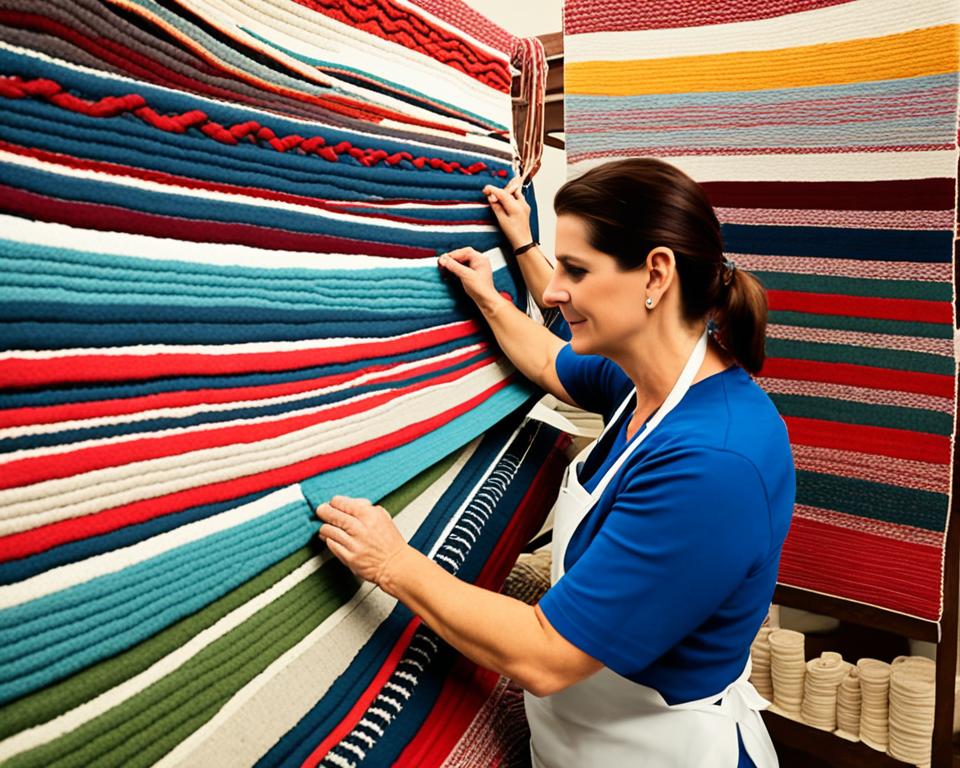
Delve into the diverse world of hand-weaving, where artisanship and heritage intertwine to create textured pile rugs and versatile flat-weave rugs. This age-old practice showcases the weaver’s depth of skill, where each piece produced is unique in character and value. Understanding these techniques opens a window to the reverence of handmade rugs and the dedication behind each finished work.
The elaborate intertwine of knots in pile rugs, such as those found in Persian and Turkish traditions, demonstrates the complexity of hand-weaving. Here, every single knot is a testament to the weaver’s patient handiwork, contributing to the rug’s dense and decorative texture. Yet, the simplicity and elegance of flat-weave rugs, like the durable dhurries and the colorful kilims, represent the other end of this weaving spectrum. These are crafted by interlocking warp and weft threads, creating a smoother, reversible finished product that is both practical and beautiful.
Below is a deeper look into these two major weaving styles that highlight the dichotomy of technique, the fibers used, and their respective cultural origins:
| Weave Type | Fibers Used | Origins | Characteristics |
|---|---|---|---|
| Pile (Knotting) | Wool, Silk | Persia, Turkey | Rich texture, intricate patterns, long-lasting durability |
| Flat-Weave | Cotton, Wool | India, Middle Eastern regions | Reversible, versatile use, lighter weight |
Looking at the flat-weave rugs, they are designed with liveability in mind — easy to transport, yet rich with the storytelling of the cultures they come from. The symmetrical patterns and bold colors often found in these rugs are distinctive, with each curve and line woven with intention. Whether as a statement piece or a harmonious addition to your decor, these rugs are worthy of both admiration and daily use.
Hand-weaving is a meticulous process that results in authentic pieces which are not only visually compelling but also filled with soul. By choosing a hand-woven rug, be it a plush, textured knot style or a resilient flat-weave, you are not just furnishing your home — you’re preserving an art form, backing sustainable craftsmanship, and bringing a piece of the world’s heritage into your personal space.
Rug Making Across Cultures
As we unfurl the meticulously woven tapestry of rug making, it becomes clear that this art form is as diverse as it is detailed. Across various regions, artisans have developed distinctive techniques and styles that are deeply entrenched in their cultures. In this section we celebrate the global diversity of rug making, examining the cherished methods and designs from Persian, Turkish, and Indian traditions. Each of these styles holds an esteemed place in the world of textiles, and their creations are much more than mere furnishings – they are storied representations of their cultural heritage.
Persian Elegance: Single Knot Mastery
Renowned across the globe for their intricate designs and superb craftsmanship, Persian rugs stand as a pinnacle of rug making. Employing the much-celebrated single-knotting technique, artisans carefully weave their stories into rugs that command attention and respect. It is the mastery of the single knot—also known as the Senneh knot—that allows for elaborate patterns and top-tier detail work, cementing Persian rugs as a luxury beyond compare.
Turkish Traditions: Double Knot Strength
Continuing our exploration, the robust and symbolic Turkish carpets emerge from an enduring heritage of resilience. The Turkish ‘double knot’, or the Ghiordes knot, is the backbone of these textiles. It ensures each piece is characterized not only by diverse tribal and floral designs but also by uncompromising strength and longevity. The influence of Anatolia is palpable in Turkish carpets, reflecting a narrative of its people’s livelihood and their intimate interaction with nature.
Indian Innovation: Rich Textures and Contemporary Designs
Shifting the loom to the Indian subcontinent, we encounter an innovative combination of rich textures and novel designs. Indian rugs are rooted in a legacy that harmonizes traditional methods with the zeal of contemporary creativity. Artisans here bring to life a spectrum of designs, harnessing techniques like hand-knotting and flat-weaving to produce textiles that are at once versatile and visually striking. Diversity in color, pattern, and texture makes Indian rugs a compelling choice for those with an eye for both heritage and modern elegance.
In the dance of threads and colors across cultures, it’s evident that the art of rug making is a rich conversation between the past and the present. Whether it’s the eloquent precision of Persian rugs, the enduring nature of Turkish carpets, or the vibrant innovation of Indian rugs, each piece resonates with the spirit of its creators and their ancestral stories. The next time you consider a rug for your space, let this knowledge guide you to a choice that embraces not just a style, but a legacy.
The Machine-Made Rugs Production: A Contrast
In the realm of home decor, the production of machine-made rugs represents a significantly different universe compared to their handcrafted counterparts. The focus here shifts from the manual dexterity of artisans to the efficiency of mechanization. These rugs, known for their uniformity and accessibility, cater to a market where speed and scalability are paramount. Let’s peel back the layers of this process to understand how it stands in contrast to traditional rug-making practices.
At the heart of machine-made rugs production, synthetic materials often take center stage, replacing the natural fibers treasured in hand-made rugs. These materials are chosen for their cost-effectiveness and are easily manipulated by machines. Through advanced technologies and automated systems, patterns and textures that once took weeks to create by hand can now be replicated in a matter of hours.
The manufacturing process usually begins with computer-aided design (CAD) programs where intricate patterns are programmed into machines. The looms, often power-driven, weave rugs rapidly, allowing for high-volume production. The context of ‘made’ shifts from the personal touch of weavers to the mechanized precision of computerized equipment, reflecting the contemporary pace and volume-driven priorities of today’s consumerism.
The difference between handcrafted and machine-made rugs is evident in the value each holds. While the former is prized for its uniqueness and artisanal essence, machine-made rugs are appreciated for their affordability and consistency. To give you a clearer picture, let’s consider the following comparison:
| Aspect | Handcrafted Rugs | Machine-Made Rugs |
|---|---|---|
| Material | Natural Fibers (wool, silk, cotton) | Synthetic Materials |
| Production Time | Months to years | Hours to days |
| Artistry | Individual craftsmanship | Computerized designs |
| Cost | Premium pricing for artisanal work | Catered to budget-friendly markets |
| Environmental Impact | Eco-friendly, biodegradable | Often associated with higher carbon footprint |
| Consumer Appeal | Art lovers, collectors, sustainability advocates | Cost-conscious consumers, convenience seekers |
It becomes clear that while machine-made rugs production satisfies the demands of a fast-paced, budget-conscious world, it lacks the depth and narrative inherent in each handcrafted rug. In essence, you trade the soulful artistry of hand-weaving for the practicalities of modern manufacturing. However, the choice you make can either support artisan communities and sustainability or lean towards convenience and mass-market appeal.
As you contemplate your next rug purchase, consider not only how it looks beneath your feet but also the narrative and production philosophy it represents—be it one of enduring craftsmanship or efficient production.
Finishing Touches: Trimming and Polishing
As your handcrafted rug nears completion, the finishing process becomes the center of attention, transforming it from a woven wonder to a polished masterpiece. This crucial phase is not merely a formality; it’s when the rug’s full grandeur emerges. Experienced handmade rugs manufacturers understand that these final steps dictate the durability of rugs—each trim, each polish, ensuring lifetimes of beauty and resilience.
Indeed, when your woven treasure lies before you, bearing the marks of skilled artisanship, know that it has undergone the most scrupulous of finales: its finishing touches.
Final Inspection: Ensuring Quality and Durability
Every weaver’s knot, every dyed thread, has led to this moment—the final inspection. This stringent assessment is what crowns a rug not only beautiful but also enduring. Artisans comb through every fiber, every knot, ensuring that the promised standard of quality is met. The inspection is holistic, examining the rug’s structural integrity, the fastness of dye, and the symmetry of design.
Only after every inch meets the stringent criteria of the artisan and the handmade rugs manufacturer does the rug advance towards the next, equally vital, steps of the finishing process.
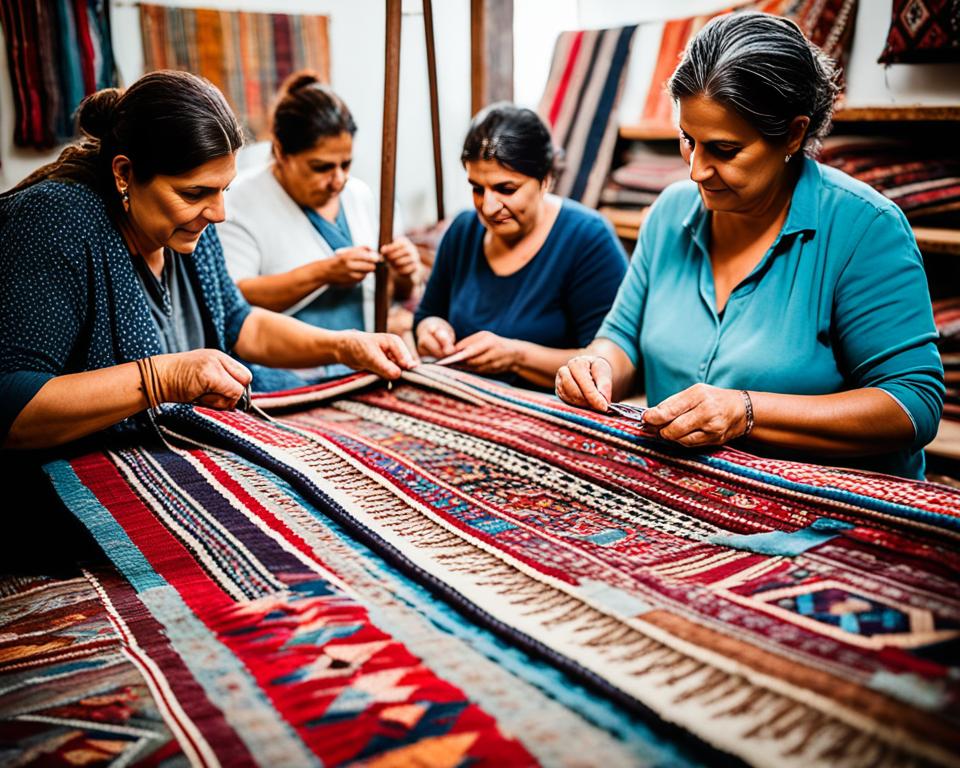
Edge Perfection and Carving Detail
The beauty of a handcrafted rug often leaves one marveling at its intricate edges and carvings—a defining feature that emanates finesse and precision. Artisans dedicate an immense amount of time perfecting these details, ensuring that every edge aligns with seamless grace. The carving, a meticulous task speaking volumes of the maker’s dexterity, highlights the dimensional contours of patterns, breathing life into every motif.
The dedication to edge perfection is more than an artisan’s pride—it’s about ensuring that the durability of rugs stands the test of time and use. It is the solidifying touch that reinforces the weaves, carrying the weight of legacies and tales yet to come.
In the end, each rug receives a thorough polishing, ensuring that it departs the workshop not as a mere accessory, but as a glistening emblem of centuries-spanning craftsmanship—and into your hands as a beacon of domestic elegance and cultural value.
The Environmental Footprint of Rug Making
When you consider the realm of interior design and home comfort, the humble rug plays a pivotal role, yet its production process may cast a footprint on our earth. It’s here where the traditional art of eco-friendly rug making rises as a beacon of sustainability.
Handcrafted rugs in particular present a favorable alternative in lessening the environmental impact of the rug industry. With a gentle nod to ecology, these artisan creations are woven not just with threads, but with a steadfast commitment to the preservation of our natural world.
Let’s unfurl the facts: handwoven rugs are often made without the use of harsh chemicals, bypassing harmful practices found in the production of conventional rugs. They embody a natural elegance, offering you the option to decorate your home while keeping a clear conscience towards the environment.
For those who place a premium on eco-conscious living, handcrafted rugs are more than a floor covering; they are a statement of sustainable choice. The choice of materials—organic, renewable, and biodegradable—illustrates a larger narrative, one of ecological awareness seamlessly stitched into each piece.
In considering the environmental impact of your home’s aesthetics, you may weigh the pros and cons of various decor items. To simplify your decision-making process, here’s a deeper dive into the environmental benefits of choosing handcrafted rugs:
| Eco-Friendly Aspect | Benefit to Environment |
|---|---|
| Biodegradable Materials | Reduces landfill waste, decomposes naturally |
| No Harsh Chemicals | Prevents pollution of waterways and soil |
| Sustainable Practices | Conserves resources, supports biodiversity |
| Longevity | Less frequent replacement, decreased consumption |
In seeking comfort and beauty for your living space, the environmental impact can guide your rug selection. By choosing eco-friendly rug making practices, you’re not only adding to the stylistic narrative of your home, but also aligning your choices with the wellbeing of the planet. Recognize that with each artisan rug you invest in, you weave your own story into the larger tapestry of environmental stewardship.
Conclusion
As we draw the threads of our exploration into the world of rug making to a close, we recognize that investing in handmade rugs goes far beyond enhancing your home’s aesthetic appeal. It’s an act rooted in preservation, authenticity, and respect for the artisanal legacy. Handcrafted rugs, in their very essence, are an intimate interweaving of art and endurance, where the narrative of each knot chronicles the saga of culture and meticulous craftsmanship.
Investing in Craftsmanship: The Value of Handmade Rugs
When you invest in handmade rugs, you’re acquiring more than a decorative item; you’re securing a fragment of history, a slice of an artisan’s life. The value of these pieces extends beyond their surface, touching upon the depth of tradition they carry within. They stand out as beacons of skill, with every fiber spun bearing witness to an artisan’s commitment to excellence. Such investment is a tribute to the weaver’s adept hands and a harbinger for the continued flourishing of artisan techniques.
Promoting Cultural Preservation Through Artisan Rugs
The act of choosing a handcrafted rug is also a powerful gesture in promoting cultural preservation. These rugs serve as tactile chronicles of heritage and societal values, speaking volumes of the community from which they originate. Each purchase reverberates as an endorsement of these artisans’ cultural narratives, fortifying their longstanding traditions against the eroding currents of time. With your discerning choice, you become an integral part of sustaining the legacy of these creators, ensuring that their stories—and indeed their art—live on for generations to come.
FAQ
What materials are commonly used in handmade rug production?
Handmade rugs are typically crafted with natural fibers like wool, silk, and cotton. Wool is particularly sought after for its durability and luster, especially when sourced from regions known for their high-quality sheep breeds.
How important is the sourcing of materials in rug making?
Ethical sourcing is crucial in the rug fabrication process. It ensures the sustainable use of resources and the welfare of animals, contributing to the overall quality and ecological footprint of the final product.
Why are traditional rug weaving techniques respected and preserved?
Traditional rug crafting methods are valued for their cultural significance and the depth of skill they require. These time-honored techniques have been passed down through generations and are integral to maintaining the authenticity of artisan rug construction.
Can you explain the difference between hand-knotted and hand-tufted rugs?
Sure! Hand-knotted rugs are created by tying individual knots on a loom, which makes them extremely durable and allows for detailed designs. Hand-tufted rugs, on the other hand, involve pushing yarn into a fabric base and then gluing it in place, resulting in a plush pile and intricate patterning.
How is yarn dyed for rug making?
Yarn is dyed using hand-dyeing methods, which can include natural vegetable dyes or modern, eco-friendly techniques. The dyeing process often requires large pots with high temperatures for even color distribution, followed by sun-drying to imbue the yarn with vibrant, long-lasting hues.
What role do patterns play in the significance of rugs?
Patterns in rugs often carry symbolic meaning, telling stories about the heritage and history of the community from which they originate. Artisans weave personal narratives and cultural elements into the designs, making each rug a unique piece of art.
What is the difference between pile rugs and flat-weave rugs?
Pile rugs are made by knotting yarn to create a textured surface, while flat-weave rugs, like dhurries and kilims, are crafted by interlocking warp and weft threads for a flat, often reversible finish. Each style reflects the distinct traditional techniques of the artisans.
How do Persian, Turkish, and Indian rug styles differ?
Persian rugs are renowned for their intricate single-knotting techniques and classical designs. Turkish carpets typically feature double knots, offering robustness and often incorporating tribal motifs. Indian rugs bring rich textures and combine traditional patterns with contemporary elements.
What is the primary difference between machine-made and handmade rugs?
Machine-made rugs are produced using synthetic materials and automated machines that focus on quantity and uniformity. Handmade rugs, however, are crafted by artisans who invest personal touch and artistry, making each piece distinct with variations that reflect the hand-making process.
How do the finishing touches on a handmade rug enhance its quality?
The finishing touches, including detailed trimming, cleaning, and precise care of the edges and fringes, reinforce a rug’s durability and beauty. This meticulous finishing process ensures that handmade rugs are delivered in pristine condition, with lasting quality.
What are the environmental benefits of choosing handmade over machine-made rugs?
Handmade rugs often use biodegradable materials and avoid harsh chemicals, making them more eco-friendly. Their production typically has a smaller carbon footprint, supports sustainable practices, and contributes to less environmental impact compared to machine-made rugs production.
Why should I consider investing in a handmade rug?
Investing in a handmade rug means supporting artisan craftsmanship, cultural heritage, and sustainable manufacturing practices. Additionally, these rugs are durable and incorporate intricate artistry that reflects the weaver’s personal story and the culture from which it derives.
